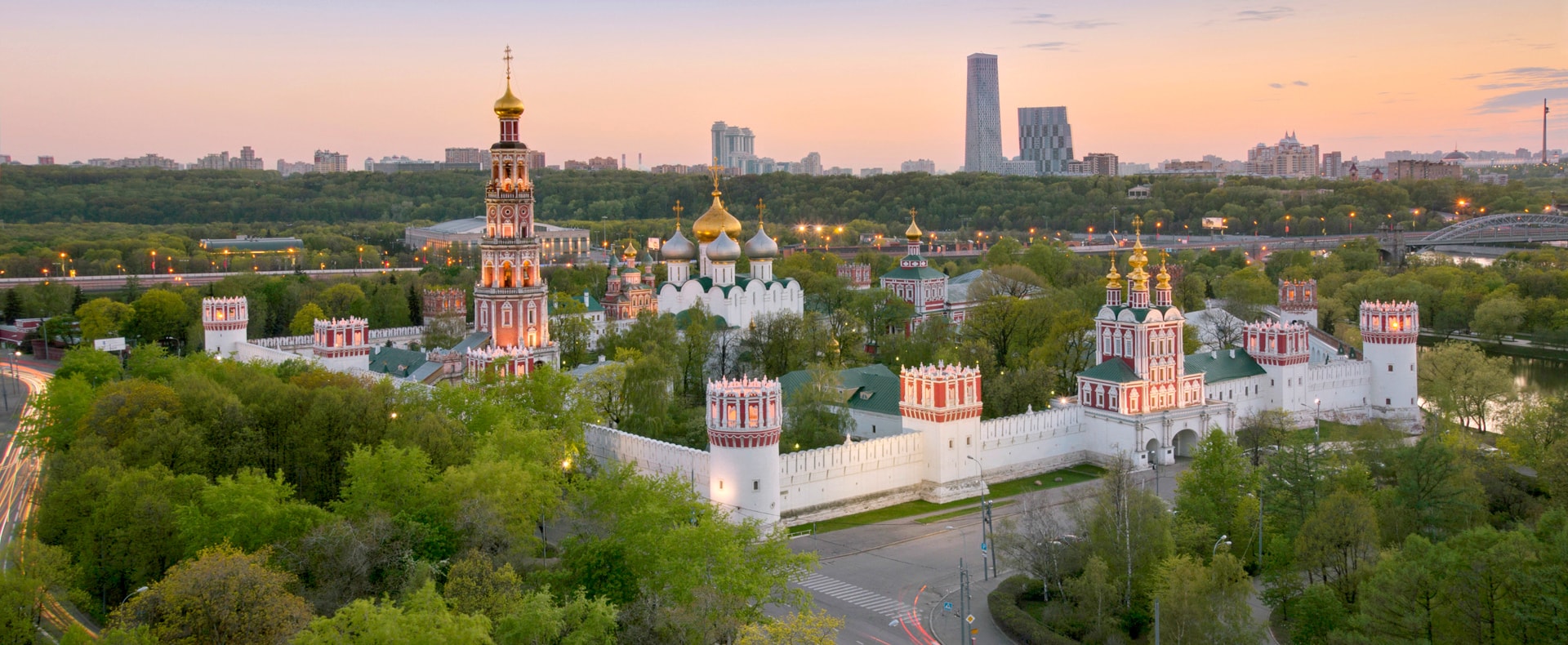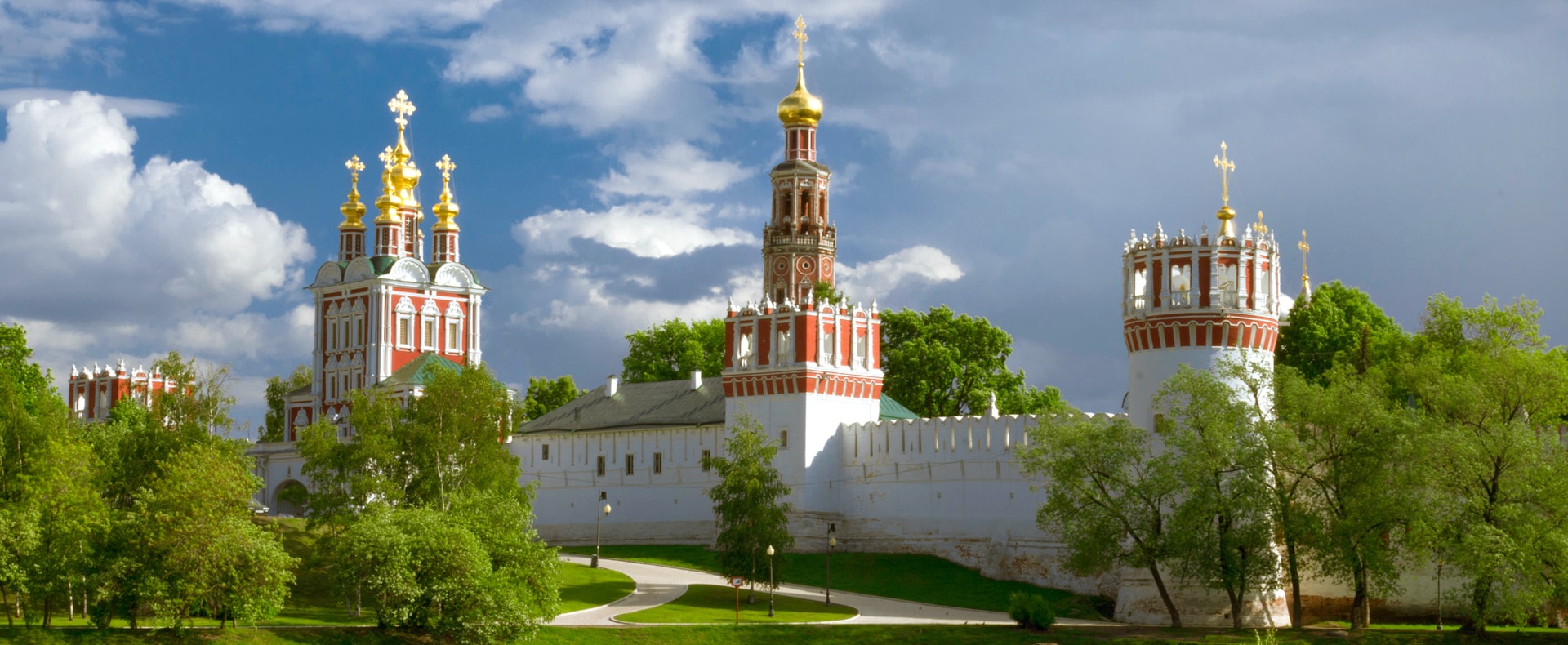Why Visit Novodevichy Convent
As one of Russia's most important convents, Novodevichy’s location is special as it is set on a bend of the Moscow River's upstream from the Kremlin. The park is commemorated to a field where during the days of the Mongol yoke, it is said that virgin girls were gathered before they were sent away as part of the city’s tribute to the Khan of the Golden Horde.
Effectively sold into slavery, these unfortunate “devichi” or maidens, according to the legend, guaranteed the city’s survival during this difficult period.
After the Mongols were finally evicted by Grand Prince Ivan III the Great from the woodlands of today's central Russia, the Muscovites faced a new enemy from the west, the Lithuanians.
In 1514, Grand Prince Vasili III, son of Ivan the Great, had carried the war to the Lithuanian frontiers. As he stood on the very walls of this important city, he vowed to God that if he and his men were allowed to take this strategic fortress, he would build a great and important convent in his capital.
As a result, the ground was broken on a new convent located at the Maiden Field. Built like a colorful fortress in the woods, Vasili called this new religious site “Novodevichy” or New Maiden Convent.
Over the years, Novodevichy Convent in Moscow would become an extremely important cloister, particularly during the reign of Peter the Great. This Tsar exiled both his ambitious half-sister and regent Sophia, and his overly conservative first wife Eudoxia within its walls. Upon his withdrawal from Moscow, Napoleon Bonaparte intended that the structure be destroyed. Still, Novodevichy’s nuns bravely prevented the Grande Armee’s engineers from setting off the charges that would have brought the convent down.
In the Soviet period, the religious building was converted into both a branch of the State Historical Museum and private apartments, which prevented authorities from demolishing the original structure.
Tourists today still find Novodevichy a nice spot to include in their Moscow itinerary. Beyond the five-golden-domed structure housing, the Our Lady of Smolensk icon, the central point of the original convent, there are several churches on the grounds: Transfiguration, Holy Virgin, St. Amvrosi, and the Refectory.
Novodevichy Cemetery
A 72-meter-tall bell tower built by Sophia, Peter the Great’s sister, dominates the convent grounds even today, which are home to Russia’s most famous burial place, the Novodevichy Cemetery (the final resting place of leading Imperial, Communist, and post-Communist officials, principal cultural figures, and other leaders of Russian society since 1898).




